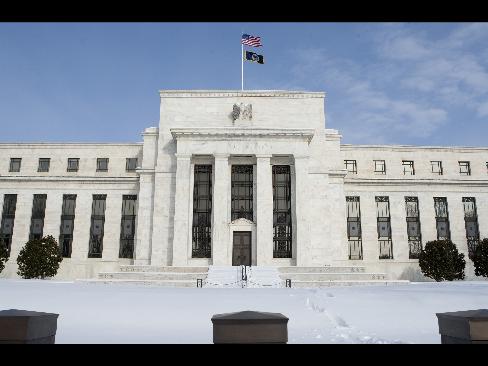Related articles:
– Federal Reserve Made $9 Trillion In Emergency Overnight Loans
– UK Banks Borrowed More Than $1 Trillion From US Federal Reserve
– Has the Federal Reserve become the central bank of the world?
– Federal Reserve to Name Recipients of $3.3 Trillion in Aid During Crisis

The Fed today released details identifying thousands of transactions including bonds bought under its mortgage purchase program and asset-backed commercial paper pledged under its Asset-Backed Commercial Paper Money-Market Mutual Fund Liquidity Facility.
The Federal Reserve withheld details on individual securities pledged as collateral by recipients of $885 billion in central bank loans, denying taxpayers a measure of the risks they faced from its emergency aid.
The central bank yesterday released data on 21,000 transactions from $3.3 trillion in emergency lending to stem the financial crisis. July’s Dodd-Frank law required the Fed to disclose the names of borrowers, the size and interest rates of loans, and “information identifying the types and amounts of collateral pledged or assets transferred.”
For three of the Fed’s six emergency facilities, the central bank released information on groups of collateral it accepted by asset type and rating, without specifying individual securities. Among them was the Primary Dealer Credit Facility, created in March 2008 to provide loans to brokers as Bear Stearns Cos. collapsed.
“This is a half-step,” said former Atlanta Fed research director Robert Eisenbeis, chief monetary economist at Cumberland Advisors Inc. in Sarasota, Florida. “If you were going to audit the facilities, then would this enable you to do an audit? The answer is ‘No,’ you would have to go in and look at the individual amounts of collateral and how it was broken down to do that. And that is the spirit of what the requirements were in Dodd-Frank.”
Fed spokeswoman Susan Stawick in Washington declined to comment.
Public Disclosure
The public disclosure of the lending data should have been prevented because it could spur runs on the banks listed, said Darrell Duffie, a finance professor at Stanford University.
“That’s a very destructive process,” he said. Still, with the data released, “if you’re justified in getting the information, then you’re justified to get enough information to judge the risk the Fed took,” he said.
Under its definition of the “ratings unavailable” category for collateral posted under the PDCF, the Fed said that “in some limited cases, ineligible collateral was pledged, but it was reviewed with the clearing banks for exclusion from future pledges.” The central bank didn’t elaborate.
The secrecy surrounding Fed bailouts led lawmakers to demand disclosure after the central bank approved aid dwarfing the federal government’s $700 billion Troubled Asset Relief Program.
Collateral Pledged
The loans extended to primary dealers under the PDCF by the New York Fed were recourse loans, meaning the potential liability of borrowers who defaulted was greater than the value of the collateral pledged, according to the Fed. Primary dealers are the firms authorized to deal in government securities directly with the Fed. At its peak, borrowing under the facility came to about $156 billion.
It is “specifically impossible” to know how much risk taxpayers were taking by looking at pools of collateral grouped by asset class and rating, said Sylvain Raynes, a principal at R&R Consulting in New York and co-author of “Elements of Structured Finance,” published in May by Oxford University Press.
“I need to know the individual composition because a $2 billion pool can be one asset of $2 billion, which would be very risky, or 2,000 assets of $1 million each, and that’s not risky at all,” Raynes said. “The spirit of Dodd-Frank was not respected, and they used the vagueness in the wording of the law to weasel out of fulfilling their duty to the American people.”
Corporate Debt
Over the life of the PDCF, $1.5 trillion of collateral with “ratings unavailable” was pledged, according to the Fed data. That’s larger than the $1.39 trillion of municipal debt pledged. Corporate debt posted totaled $2.35 trillion.
A total of $8.95 trillion was lent over the life of the PDCF, backed by $9.67 trillion in collateral.
The Fed released details identifying thousands of transactions including bonds bought under its mortgage purchase program and asset-backed commercial paper pledged under its Asset-Backed Commercial Paper Money-Market Mutual Fund Liquidity Facility.
The central bank also omitted details on individual securities pledged as collateral under its Term Auction Facility and its Term Securities Lending Facility, which was announced on March 11, 2008, as the first program under which the Fed planned to lend to non-bank dealers.
The Fed authorized its New York branch to establish the PDCF on March 16, 2008, the same day it made commitments to convince JPMorgan Chase & Co. to buy troubled dealer Bear Stearns. A run on New York-based Bear Stearns was seen as threatening the stability of global markets, and the PDCF for the first time allowed dealers to borrow on a collateralized basis from the New York Fed.
Lehman Collapse
In September that year, as Lehman Brothers Holdings Inc. was on the brink of filing for bankruptcy, the PDCF was expanded to accept all types of collateral pledged in tri-party repo deals, including high-yield, high-risk securities and equities. The previous program only accepted investment-grade debt securities.
The first peak of PDCF lending occurred in April 2008 at nearly $40 billion, according to the New York Fed. As financial markets improved, banks reduced their balance-sheet risk and the PDCF pricing became less attractive, usage of the facility fell off and stopped in mid-July that year.
Borrowing then leapt to over $140 billion in mid-September 2008 from no activity the previous week, according to the New York Fed. The program ended Feb. 1 this year.
Under the TSLF, dealers could swap investment-grade securities, including mortgage bonds, for U.S. Treasuries for 28 days. Usage peaked at $235.5 billion in October 2008, and the program was also closed in February.
By Caroline Salas and Matthew Leising – Dec 2, 2010 6:00 AM GMT+0100
Source: Bloomberg